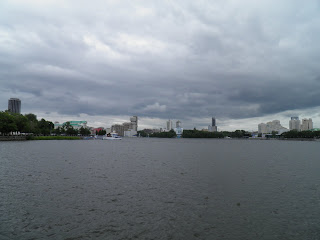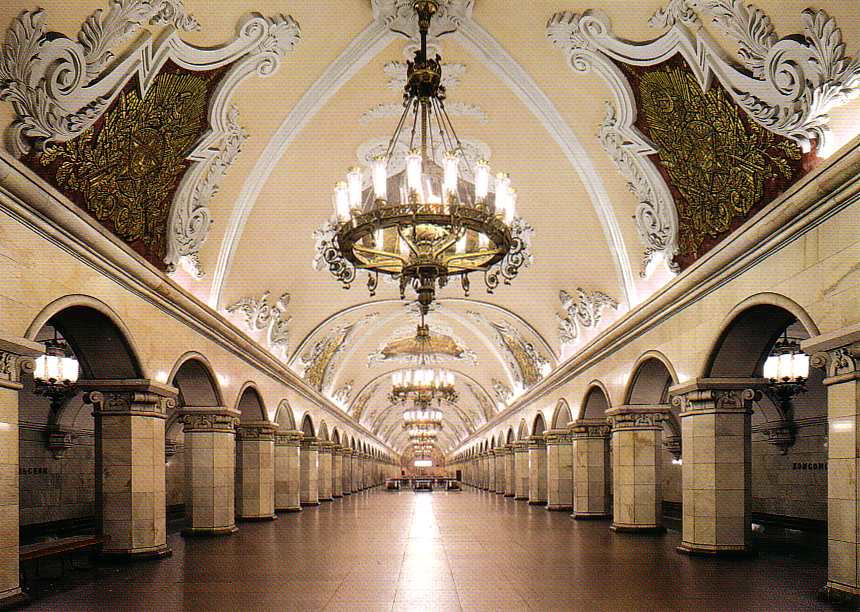 |
| End of the line - Vladivostok Station |
After this most bizarre of breakfasts we decided to go out and explore the city a bit. We knew in advance that 90% of the charm of Vladivostok is its place at the end of the Trans Siberian railway line - it doesn’t have many actual sights in all honesty. The most impressive sight in the city, if it can be classed as an attraction, is Russia’s Pacific Naval Fleet, which is kept in the bay. To get a view of this, we climbed up the highest hill in the city - the Eagle’s Nest, to look down. The harbour is dominated by the huge footprint of a suspension bridge that is under construction. The city appears to be undergoing a major facelift- there is building work going on everywhere and apparently President Medvedev was here yesterday. It seemed that we had turned up a few years early - because judging by the scale of construction, the city is going to be quite impressive when everything has been finished.
 |
| View from the Eagles Nest (notice the suspension bridge) |
 |
| Guns overlooking the harbour |
 |
| Cramped fish (don’t ask me what it is) |
 |
| Vladivostok city |


















































